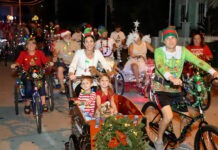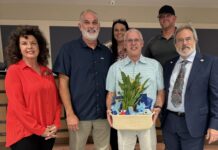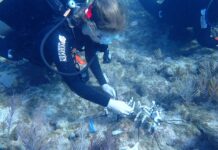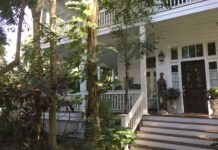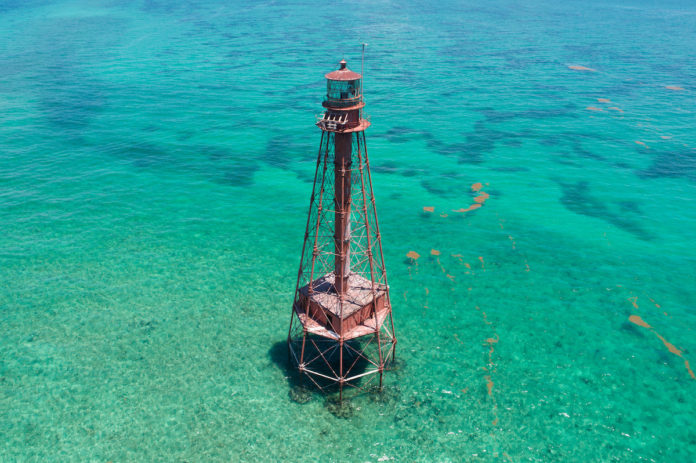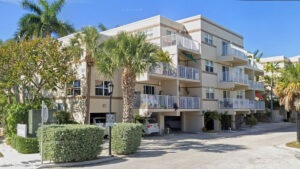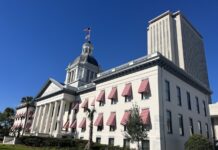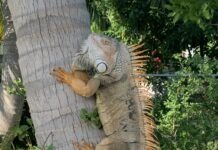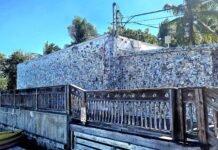The proposal by the Florida Keys National Marine Sanctuary of three spots in the Keys as “limited use” for Blue Star Dive Operators only has caused a minor uproar. But the sanctuary’s superintendent says language pertaining to the three sanctuary preservation areas — Carysfort in Key Largo, Sombrero in Marathon and Sand Key off Key West — wasn’t written well and didn’t address private entry.
“We didn’t speak to private entry at all, so silence has been interpreted that we mean to restrict people, community members, citizens and regular folks on their boat. That was never our intention,” Sarah Fangman told Key Largo Sunset Rotary club members on Sept. 16, repeating the message on Sept. 17 at the Marathon Chamber of Commerce luncheon. “That was our mistake to not be crystal clear about that. We just didn’t speak to it and silence means, ‘you’re shutting us out.’”
Last month, the sanctuary unveiled its Restoration Blueprint during an advisory council meeting in Marathon. Four alternatives for management of the 3,800-square-mile sanctuary were unveiled. Now, fishermen, dive operators, environmentalists and others are sifting through the proposals to see how it might impact them and their business.
Fangman said she’s been hearing a lot from people about the limited-use aspect. Through the process of drafting the blueprint, Fangman said they heard from people who believed there were places that were becoming too crowded and had concerns the experience was being diminished by “too many people.”
“They asked us to provide some proposal related to that, so we did,” Fangman said. “We picked three existing preservation areas that aren’t new — one in the Upper Keys, Middle Keys and Lower Keys — to test this concept.”
Fangman said she hopes that, No. 1., the message spreads that it wasn’t the sanctuary’s intention to restrict everybody from coming, and, No. 2, that there’s a way to address the issue.
“If it’s not Blue Star, what is it? Is it we just put a number of mooring buoys for a first come, first serve?” she said. “And if you can’t get on a buoy, come back another day? That’s what we need to hear. That’s the point of this process, to get input so we can change the proposals to reflect what is the right way to go.”
The limited-use issue came to a head this past week through the efforts of many, including Beth Ramsay-Vickrey.
“While I appreciate the sanctuary now stating that this language was a mistake and was intended to apply to commercial operations, words matter,” she said. “And as currently worded … would preclude the general public from accessing these three iconic reefs. Words matter and so do comments. I encourage the public to comment on this and any other section which causes them concern.”
Sanctuary Advisory Council member Ben Daughtry told the chamber audience to spread the word about this oversight. “Please don’t keep this information to yourself,” he said. “I want people to be engaged.”
In the Keys, information sessions will be held for the public to learn more about the proposals and provide public input. Written comments will be accepted at the session at 6 p.m. on Monday, Sept. 23 at Key West High School; at 6 p.m. Monday, Sept. 30 at Marathon Middle-High School; and at 6 p.m. Monday, Oct. 7 at Corals Shores High School in Tavernier. NOAA will be taking comments through Jan. 31, 2020. They can be submitted online to floridakeys.noaa.gov/blueprint.
Members of the public can provide oral comments on the proposals during the Sanctuary Advisory Council meetings, which will be held Oct. 15 at the Marriott Beachside in Key West and Dec. 10 at a location to be determined in the Upper Keys.
— Sara Matthis contributed to this report.
